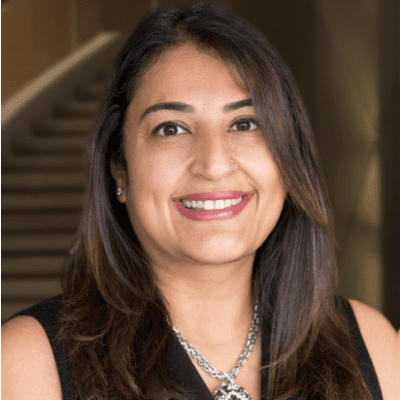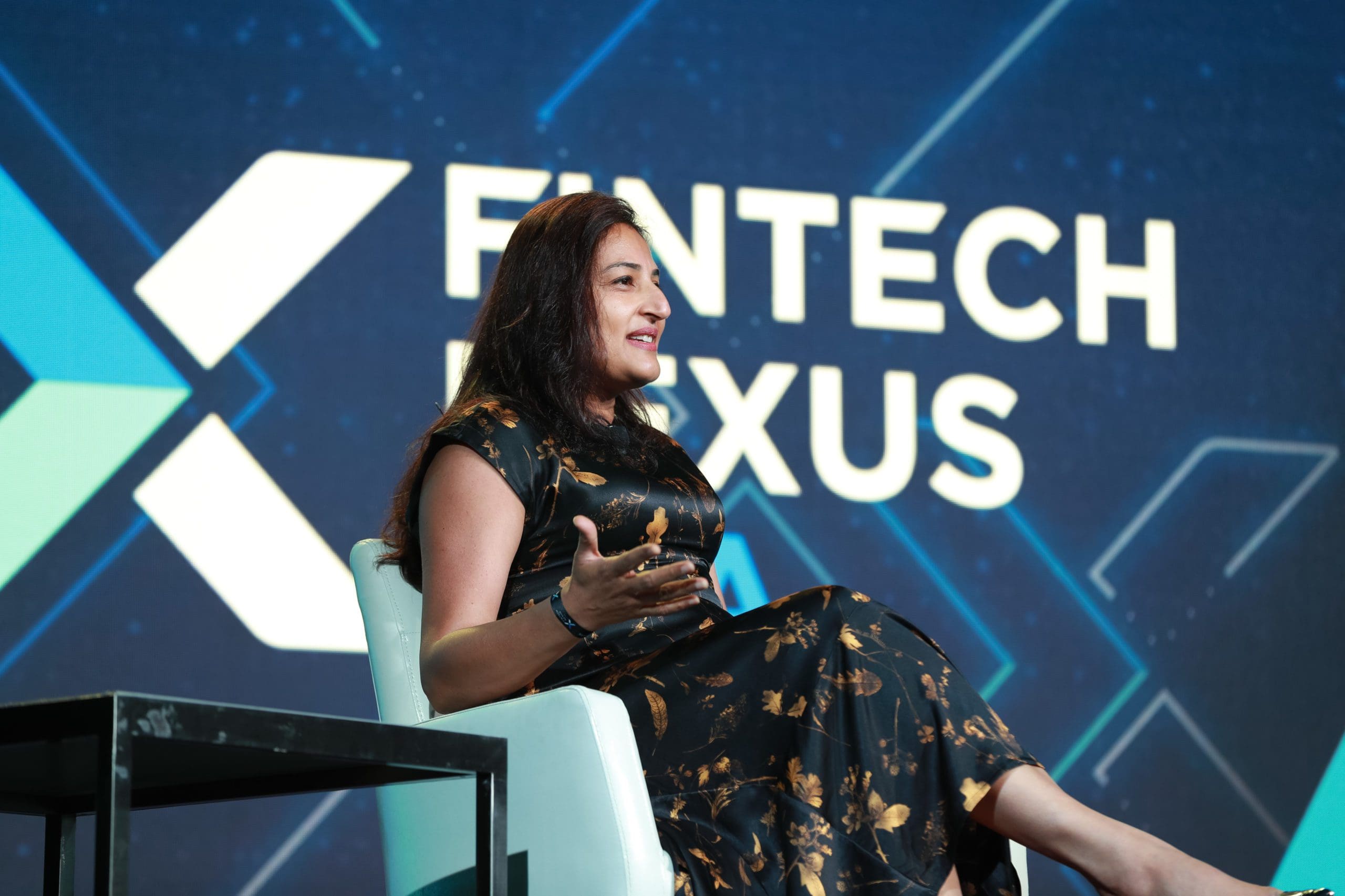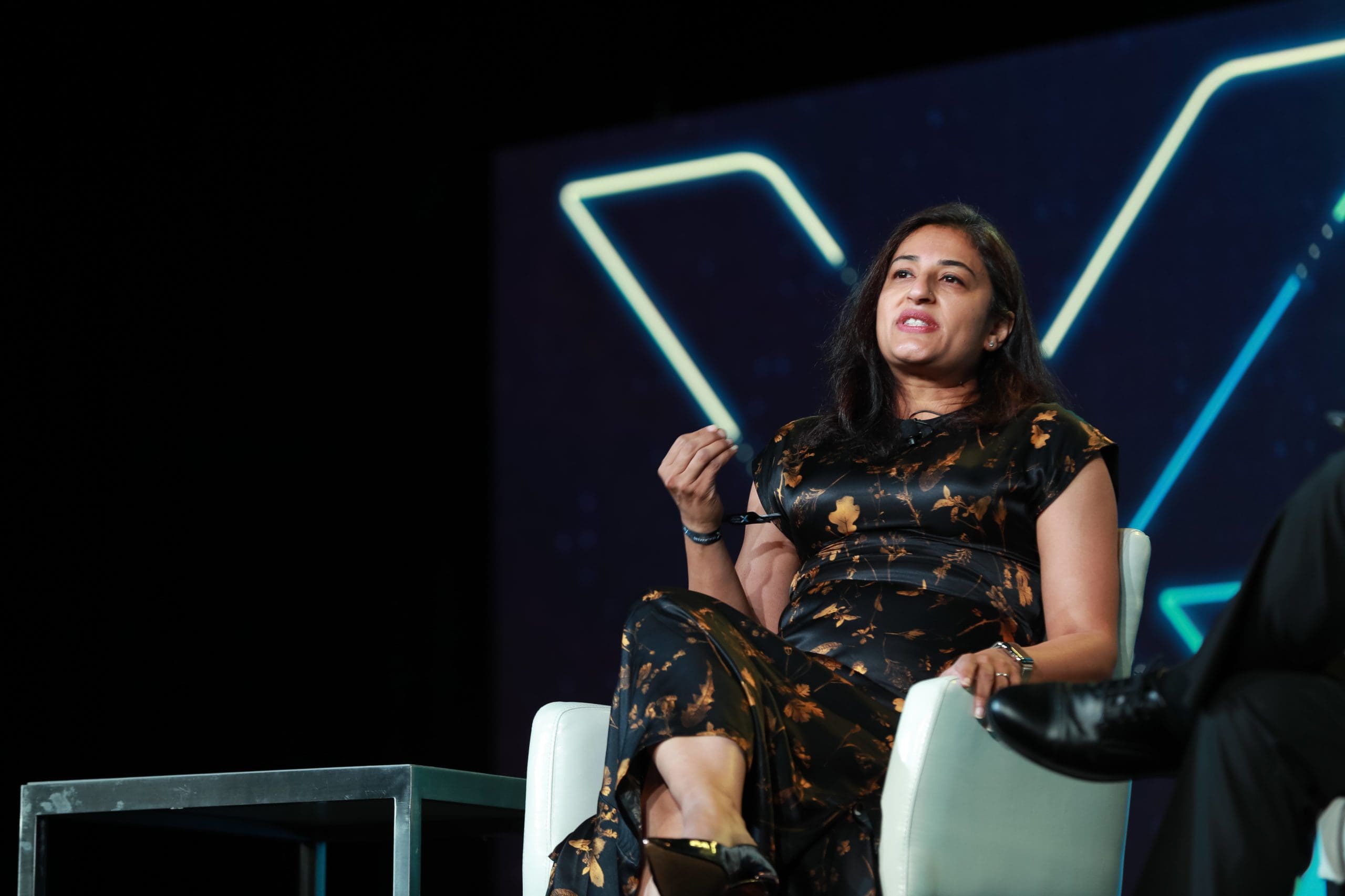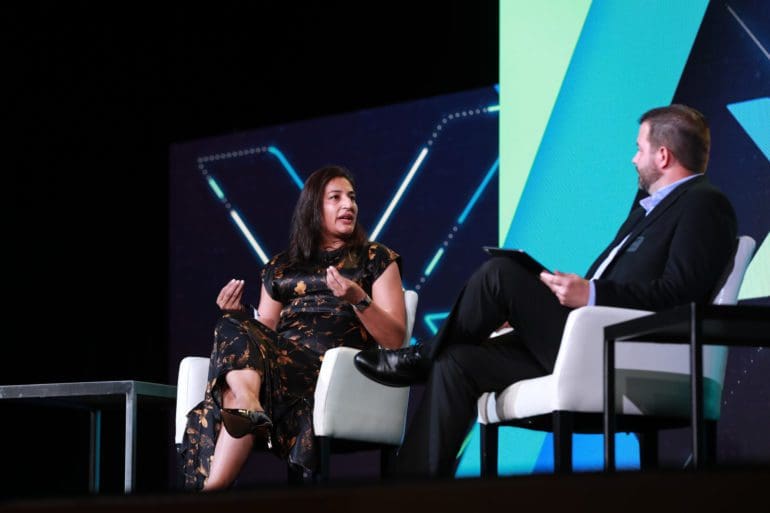On the first day of Fintech Nexus USA 2022, amidst the excitement and anticipation of the first hours, the keynote stage was awash with the movers and shakers of the fintech industry.
Goldman Sachs has been a critical player in the push from incumbents to remain ahead in the emerging fintech scene. Fintech Nexus’s Todd Anderson was joined by Swati Bhatia from Marcus by Goldman Sachs to discuss the future of consumer finance and the impact of the digital shift.
“A friend and mentor of mine, author, Roger Martin, talks about this concept of flattening technology,” said Bhatia. “This “flattening technology” is something which sits on top of existing ecosystems, and all semblance of competitive advantage disappears if you don’t adopt it.”

“What’s happening in banking is this technification. I like the term technification more than digitization because I don’t know if digital will be the form factor in which banking will be consumed. I think what’s happening with banking is if incumbents don’t embrace this technification, all existing competitive advantage disappears.”
“Where we are headed is absolutely going to be a function of who embraces it.”
Marcus by Goldman Sachs: a digital approach to a changing landscape
Goldman Sachs is taking the digital disruption of the financial industry seriously, exploring multiple solutions to maintain its competitive advantage as an established incumbent. One of their responses involved the creation of Marcus, a digital-only bank and financial service provider. Starting with personal loans, the bank has expanded to offer saving accounts, certificates of deposit, and most recently, checking accounts and personal investment solutions.
“Goldman Sachs recognized this disruption in financial services five, six years ago,” continued Bhatia. “There are two criteria, that have to be met for a business to emerge out of an idea. The first is, is there a real customer need? And second, is, is there something that you can bring to the table that’s unique that allows you to solve that problem, and maybe even win while solving that problem.”
“So, Goldman Sachs’ team talked to 10,000 consumers and identified that lending was a space which was getting heavily disrupted. Lending technology in 2016 was changing the shape of the lending landscape. Goldman Sachs felt that their balance sheet strength, their risk management, DNA, and customer-centricity is something that they can bring to bear and solve some of the problems like confusing terms, hidden fees, etc.”
This first step was met with a great reception from customers. The same morning of the Fintech Nexus keynote, Marcus had been awarded the JD Power 2022 highest customer satisfaction score.

“From there, deposits became the second product which makes sense from asset side liability side, both sides of the balance sheet. Meeting customers saving needs now in addition to borrowing needs. We differentiated that product by giving excellent service while providing strong financial value to the customers.”
“We brought the Goldman Sachs service to customers and a very easy digital experience. Then from our acquisition of Clarity Money, a small startup, we had a foundation to build a product called Marcus insights, which is now helping customers manage their financial life, their saving, and borrowing.”
Marcus now provides customer credit and investment solutions and has released the beta version of its customer checking account. They also closed the acquisition of GreenSky at the end of March 2022 and a Buy Now Pay Later entity focused on the home improvement sector.
Embedded finance as a self-fulfilling strategy
In addition to the customer-centric products, Goldman also has ventured into providing solutions for business partners to meet the needs of their customers. They released the Apple card in August 2019 and, more recently, the GM card.
“We have two self-fulfilling strategies that we are pursuing,” said Bhati. “One is our proprietary bank, which is branded markets where we want to meet customers, saving, investing, spending, borrowing, and optimizing needs. And we have another business, which is a large partnerships business.”

“We are strong believers in embedded finance, and we think consumers should consume financial products in the ecosystem that they prefer. So our large partnerships business is embedding our products in our partners’ ecosystem, like Apple card, and now GM card.”
The embedded finance market has been increasing momentum, with various fintechs leading the way. In 2021 the sector saw VC investment almost triple, reaching over $4.25 billion in the US.
“We look for like-minded partners who obsess about the customer and are future leaning. Their customers are very loyal to them. So if you think about Apple or GM, that’s marquee partnerships, marquee brands, where customers are extremely loyal to them. We’ve built this simple, new flexible technology platform that allows us to customize the product according to the partner’s needs. Even though both Apple and GM cards are powered by Goldman Sachs Bank, USA, they’re very different products. We also don’t see these as just co-branded cards; we see our partnerships as Multi-Product partnerships.”
Customer feedback leading the way
The most recent addition to the Marcus family of products is Marcus Invest. Marcus Invest provides customized automated investment portfolios to customers by applying years of investment expertise.
“Our customers said they wanted to have access to Goldman Sachs’ expertise in investing,” said Bhati. “So we built Marcus Invest as a product.”
The investment sector is highly saturated, making it a tough market for Marcus to release a new product. However, Bhati was confident of its future success.
“Going back to what I said before, it comes down to; Is there a real need to be met? And is you do you have something to bring to the table?”
“The real need to be met when we asked our customers is that there was too much choice. They want to do long-term investing but don’t know how to choose. Customer feedback told us that Goldman Sachs knows a thing or two about investing and wealth building, and they want to access that expertise. So it was a combination of the two that inspired us to build investing as a product for our customers.”
“We are trying to democratize Goldman Sachs investing expertise through this product, we now know what the customer is saying, and we want to reflect our value system in our investing. We have work to do, and we’re going to bring more to market. And we’ll keep working till we feel like we’ve truly met the customer need.”

Checking accounts are key
The checking account is another of the products in the works for Marcus. Releasing the beta version for testing by their US staff at the end of April 2022, the bank plans to launch the solution to customers soon.
“Checking is a very important part of a customer’s financial journey,” said Bhati. “It’s an account where they manage their day-to-day from them. And we strongly believe that day-to-day decisions do have significant impact on someone’s long-term financial picture.”
“Traditionally, banking branches had the loyalty of the customer. You walked into a branch for transactional interaction, and you walked into a branch for something more engaging. Customers’ interaction with their financial institutions has become very fragmented.”
“We asked a question to the customers which is which financial institution is your partner in your financial success? And 74% of customers said no financial institution, and they all have bank accounts. One person named their financial advisor, and 24% had an array of answers.”
To address this fragmentation, Bhati said the checking account is critical. “Checking creates a frequency of interaction, frequency of interaction creates engagement, and engagement is crucial for building trust.”
Meeting customers where they are
“Customers will pick their favorite based on who brings them financial value, who is where they are, and who actually gives them the ability to control their financial life,” concluded Bhatia.
“We want to meet customers saving, investing, spending, and borrowing needs. We think that customers are demanding, and they deserve, financial services where they are. Which is why our strategy is to be the bank, if they want to come to us, and embed our products in our partners’ ecosystem if that’s where they want to consume financial services.”


